Warren Adler's Blog, page 6
February 9, 2018
Warren Adler’s Top 5 Picks for Books to Read this Valentine’s Day
Love remains one of our greatest mysteries and one of my greatest sources of inspiration. What makes us fall in love? Why do we fall out of love? Why that person and not another? Fiction that captures love in all of its nuances and complexities is worth a read. Here are my top 5 picks to add to your reading lists this Valentine’s Day:
5. Gone with the Wind by Margaret Mitchell
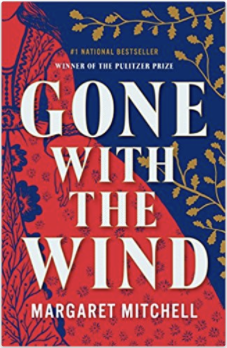
The novel follows Scarlett O’Hara, a headstrong woman, whose will to survive the Civil War and Reconstruction leads her into a tumultuous relationship with the reckless Rhett Butler.
4. Jane Eyre by Charlotte Brontë
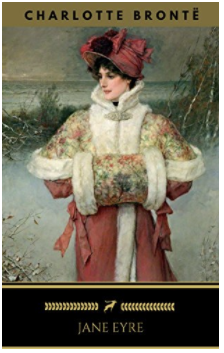
The classic tale of Jane Eyre’s love affair with Mr. Rochester evolves over time as the shocking secret he’s kept hidden threatens to break them apart for good.
3. Tender is the Night by F. Scott Fitzgerald
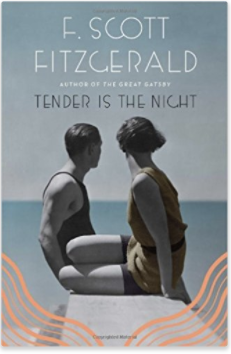
The last finished novel from Fitzgerald tells of the doomed marriage between Dick and Nicole Diver. It deals with infatuation, remorse and the complexities of mental illness.
2. A Farewell to Arms by Ernest Hemingway
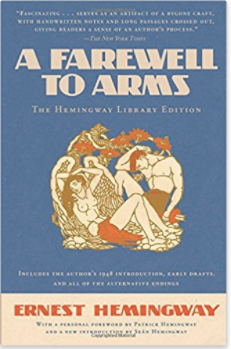
This novel follows the powerful but ill-fated love between Frederic Henry, a wounded expatriate American paramedic and Catherine Barkley, an English nurse during World War I.
1. Of Human Bondage by W. Somerset Maugham
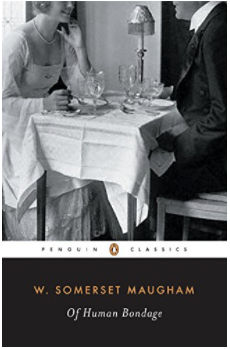
The nature of love is masterfully depicted in this classic coming-of-age story. Philip Carey, a young orphaned man born with a clubfoot, has a tortured love affair with Mildred Rogers, a waitress, which changes his life forever.

The post Warren Adler’s Top 5 Picks for Books to Read this Valentine’s Day appeared first on Warren Adler.
The Watergate by Joseph Rodota: A Book Review
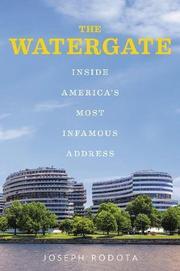 To many, mentioning the word “Watergate” recalls a four-decade-old historical event that caused the downfall of the 37th American President, Richard Nixon. Hundreds, perhaps thousands of books have been written cataloging, commenting and analyzing this astounding hiccup in American national life.
To many, mentioning the word “Watergate” recalls a four-decade-old historical event that caused the downfall of the 37th American President, Richard Nixon. Hundreds, perhaps thousands of books have been written cataloging, commenting and analyzing this astounding hiccup in American national life.
To others, especially those in the Washington area, it is an apartment, hotel and office complex on the shores of the Potomac River of unusual design a stone’s throw from the Kennedy Center, minutes from the White House and State Department which has been and continues to be the residence of some of the most powerful and celebrated figures in American political life.
To Joseph Rodota, who has penned the book The Watergate with the apt subtitle “Inside America’s Most Infamous Address,” it is a quintessential rendition of how a complicated, creative and convoluted international real estate deal on a Washington mudflat became a permanent monument to American political chicanery.
Based on painstaking and remarkable research, Rodota, a political careerist turned author who worked in the Reagan White House and a top aide to former California Governor Pete Wilson delves deeply into the exciting and wild shenanigans that involved a powerful Italian Development company with ties to the Vatican, an uncompromising and brilliant Italian architect, a covey of Washington developers and assisting architects and an assortment of political operatives, international bankers and colorful real estate tycoons in a birthing drama that makes Donald Trump’s The Art of the Deal look like child’s play.
In the interest of full and honest disclosure, I must confess that Rodota’s fascinating rendition vividly recalls my own small part in this imbroglio which I hope will not distract from my sincere commendation for his work.
I named this once muddy swamp Watergate. No irony intended.
Actually, it was borrowed from the name of a restaurant that occupied an adjacent property at one time and seemed wonderfully appropriate. Apparently, the powers that be agreed.
That was part of my job in my salad days as the founder and chief operational officer of Warren Adler, Ltd, an advertising and PR agency that I founded in the nation’s capital that, in addition to its political accounts, specialized in creating environmental and community imagery for housing communities throughout the Washington metro area.
My firm would name a community, prepare material to embellish that name and promote and advertise that community to the public. My tenure in this role did not last beyond the first Watergate building, constructed by my clients, but I did know and work with many of the players involved in the sales effort.
I believed, of course, that this complex because of its location would house some of Washington’s important political figures. Among them to name a few were Anna Chennault, Bob and Elizabeth Dole who lived next door to Monica Lewinsky and her mother, Ruth Bader Ginsburg, a gaggle of famous Senators, and the various socialites and friends of Presidents who bought into the Watergate condos to be part of the social action as well as prominent lobbyists and foreign dignitaries.
Of course, no one could have predicted, how the break-in attempt at the Democratic National Committee offices in the Watergate would enshrine this development as ground zero of one of the most cataclysmic events that has ever “shivered the timbers” of our ship of state.
Many people involved in that turbulent era may no longer be alive, but the event still lingers in the public consciousness although most people haven’t a clue as to what really happened or why except that it made lasting legends out of all the principal players and lingers in memory as a rallying cry for freedom of the press and a cautionary tale for corrupt politicians collectively identified under the umbrella of a single name: “Watergate.”
What Joseph Rodota has done is give life to this inanimate configuration of apartments, offices and a hotel complex as if he was probing the inner life of a living colorful and controversial celebrity which has morphed into the perfect venue for bizarre events.
The post The Watergate by Joseph Rodota: A Book Review appeared first on Warren Adler.
February 7, 2018
James D. Shipman
I restarted my writing at age forty when the stark realization of my own mortality washed over me. I had published a few short stories and poems in college but children and my career grabbed the reins from me in my thirties and I wasn’t able to pursue my passion. Sitting back on my fortieth birthday, I decided I would feel disappointed at the end of my life if I merely wished I was writing instead of actually doing it. I started up a project about the fall of Constantinople and that historical work became my first published novel.
My writing is dear to me. I am able to escape the pressures and stresses of the real world and craft a story that I hope people will ultimately enjoy. Even more fulfilling, when I’m in the midst of writing, I’m able to live in the historical timeframe I’ve selected and experience the hopes and fears of my characters. I love the past and it is a delight to step back in time for a few hours. I’ve never regretted for a moment my decision to return to writing and forge forward with my dreams.
https://www.james-shipman.com/
The post James D. Shipman appeared first on Warren Adler.
February 2, 2018
A Roman à Clef and its Aftermath
A roman à clef is a French word that loosely defines a novel as a work of fiction based on real events and characters. It is not a precise definition, especially if it is based on contemporary events since present time blends into historical time at an ever-accelerating pace and distorts any attempt at authenticity.
Case in point is my novel The Henderson Equation, written 39 years ago and, yes indeed, based on actual events and characters who were alive at the time. In some ways, it is a cautionary tale for novelists and filmmakers who often label their films as “based on a true story.”
The core idea for The Henderson Equation was that a newspaper in the nation’s capital had been instrumental in bringing down a president. The newspaper was run by a woman who took over the reigns of the paper after the suicide of her husband who had run the paper until a mental collapse forced him to resign. The editor was a charming, aggressive guy who, smitten by the power of his journalistic achievement in destroying the President, was convinced that his paper could now help create a President that met its particular specifications.
It was, indeed, a spin on Watergate and the Washington Post whose daily front page hammering of the ill-fated break-in at the offices of the Democratic National Committee eventually led to the forced the resignation of Richard Nixon not long after he won his second term presidency in a landslide. It was the watershed moment for journalists, inspiring thousands of eager beaver young wannabes to embark on careers aimed at exposing political corruption and, as history can attest, shattering the existing order.
If you lived in the Washington area, as I did, and knew many of the players in this strange saga, the Watergate story was pounded into your consciousness on a daily basis. You could not escape it and it did indeed lead to one of the most significant political events of the twentieth century. For me, it was rich fodder for an imaginative novelistic take on the aftermath. It made celebrities out of its significant players and still invades the human consciousness after 46 years.
Now, even the aftermath has an aftermath as confirmed with the release of the movie The Post, based on the autobiography of the iconic Katharine Graham and produced by the skilled hands of acclaimed filmmaker Steven Spielberg with Meryl Streep as Katharine Graham and Tom Hanks as Ben Bradley, the heroine and hero of the Watergate saga.
The movie, with its “freedom of the press above all” cache, was clearly a Watergate preview although it dealt primarily with the brouhaha over the publication of the Pentagon Papers, a classified document prepared by Daniel Ellsberg which the government at the time wanted to be squelched.
The document revealed that government officials had acknowledged that the Vietnam war was unwinnable while hyping the idea that victory was around the corner. One can intuit from the movie’s success and its add-on ending indicating the break-in incident at the Watergate offices of the Democratic National Committee that yet another Watergate remake is on the horizon. While the Pentagon Papers was a significant freedom of the press issue, it pales beside the “real” story which still lives on in the public imagination as “Watergate”.
In writing what became The Henderson Equation my fired-up fictional imagination did create characters based on hearsay knowledge of the people involved, none of whom I had up to then engaged with personally. I was familiar with them only through the intense coverage of the Watergate story and my own interactions with the Post and a number of its ad reps and reporters through my ownership of an Advertising and PR Agency in Washington that did significant business with the Washington Post – I did have a passing knowledge of its history.
I knew that Katharine Graham’s father, Eugene Meyer, a multi-millionaire and former head of the Federal Reserve and the World Bank, had bought the paper in a bankruptcy auction in 1933 and poured millions into it. He had appointed Kay’s husband, his son-in-law, Phil Graham, as publisher and after the paper became successful he gave shares of it to employees. Kay spent her early life rearing her four children until Phil’s mental illness and suicide shattered her world and pushed her into the role of Publisher of the Washington Post.
I had been a consultant to the Republican National Committee as well and had run a number of political campaigns as part of the business of my agency.
In those roles, I was deeply involved in the political gossip of the times and was privy to the behind the scenes goings on at the Post, later embellished through the founding of the Dossier Magazine by my wife and son, which covered the Capital’s so-called “society” doings and its interaction with the revolving door of the movers and shakers who ran America.
Perhaps another motivation for writing The Henderson Equation was my own experience with newspapering and journalism. My first job after college was as a copy boy for the New York Daily News, a job that taught me a great deal about the wonders of the old-fashioned ink-stained world of newspapering.
That experience found its way into The Henderson Equation as well. My next job was as News Editor, and then Editor-in-Chief of the largest weekly in Long Island where with two in staff I wrote and produced a minimum 56-page paper weekly which included writing my own immodest and ego-bloated column based on how I saw the world at age twenty-two.
Drafted in the Army during the Korean War I was, after basic, assigned to be the only Washington correspondent for Armed Forces Press Service in the Pentagon. I filed bylined stories that appeared throughout the world in every newspaper published on every base and ship of the Armed Forces. Taken together, these experiences booted me in the direction of writing a novel about a newspaper.
It was no accident to choose the Washington Post whose coverage of Watergate gave me the hook of inspiration to fantasize about the characters who ran the Post, now the hotshot model of fearless journalism. After all, I did have a passing gossipy knowledge of the principal players and the useful experience of my salad days.
Another coincidental bit of information that I had acquired was through a client of mine who owned a private airline service that somehow was connected to the Washington Post through a rental arrangement.
My clients revealed how they had flown Phil Graham back to Washington in a straightjacket from one or more of his breakdowns, offering another gossipy tidbit that he had left his wife Katharine for a teenage sweetheart. True or false, it was the kind of information that a fiction writer salivates over, especially in this case.
I don’t remember how this factoid entered the conversation, but I suspect it was sometime after one of the Capital’s newspapers had reported that Phil Graham had committed suicide by shotgun after he had been conditionally released from a mental institution and brought to what might have been a family-owned second home in Virginia’s Hunt Country for rehab. According to the story, he quite obviously found a loaded shotgun and killed himself. For a fiction writer, whether the facts reported were true or false, the idea was worthy of a good plot point.
While the book made clear the event was declared an accident, one might deduce from the circumstances that leaving a loaded gun around the house when a mentally unstable outpatient from a mental hospital was one of the occupants could raise questions of implication.
One must remember that however one interprets events in the novel, it is pure fiction, based on nothing more than vague hearsay and the author’s imaginary inspiration. It does not even deserve the appellation “roman à clef” or the absurdity of filmmakers labeling their distortions as “based on a true story.” Nevertheless, it has become an accepted definition of authorial imaginary embellishment no matter how far it wanders from actuality.
Washington has always been awash with juicy gossip passing itself off as “absolute truth.”
To a novelist, Washington represents a never-ending cornucopia of intriguing material, chicanery, ambition, sexuality, corruption, greed, egomania, harassment on every level, power games, and every aspect of human folly and evil and that’s only for starters. Of course, there is idealism, patriotism, charity, honesty, heroism, decency and goodness in Washington, but storytelling content feasts on venality and conflict and most exciting fictional yarns are laced with such diabolical character traits.
Another client of mine was Bobby Baker, for whom my firm opened the once notorious Carousel Motel in Ocean City. Bobby, who like most of the players of that long lost time, died recently, but he was a protégé of Lyndon Johnson and a storehouse of inside knowledge of the extracurricular lives of our politicians which would make the current revelations of forced intimacy read like Rebecca of Sunnybrook Farm.
A novel, even with a plot premise taken from so-called real events, is a potpourri of bits and pieces remembered, embellished and filtered through the author’s imagination. That said, let us fast forward to the main point of this tome, the dangers inherent in basing one’s fiction on characters still living in the real-time “roman à clef” world concocted by novelists.
My wife and I would often go for a week’s stay at Rancho La Puerta, a spa in Tecate, Mexico. We learned about the spa from a reporter my wife had assigned to cover the spa when she was editor-in-chief of the Washington Dossier, a magazine that my son, wife and I had conceived and founded that covered the activities of the Washington social world, a kind of local Town and Country. It had taken hold as a must-read for the so-called elite who ran America, perhaps an exaggeration but not that far from the truth.
Sometime in the eighties, almost within weeks of the publication of The Henderson Equation, we decided to go to Rancho La Puerta during the holiday time from Christmas to New Year’s.
The novel, by the way, was hardly a best-seller and the gossip grapevine assured me that it would not be reviewed by any big city newspaper, especially the Washington Post, since it was, in effect, an attack on the state of journalism in the aftermath of the Watergate story. This was long before “fake news” became a political hot button and long before Twitter, Facebook, cell phones and social networking changed the traditional media forever.
In those years even Rancho La Puerta was wonderfully primitive and attracted a bevy of interesting people. On our first Christmas to New Year’s, we met, of all people, Katharine Graham and her buddy Meg Greenfield who was in charge of editorials for the Post.
Kay, as she was called, was gregarious and charming and enjoyed mixing with those of us of lesser notoriety. In my mind then and perhaps correctly envisaged, she was the most powerful woman in the world, having been at the head of a newspaper that arguably caused the downfall of the head of the most powerful country on earth.
The manner of her speech was so distinctively wasp upper class, which seemed forbidding at first, but was quickly dissipated by her charm and sincerity.
We were both tennis players which provided the entre to our bonding. I loved being with her. My wife was taken with her as well and we shared meals, hikes, and conversation at the round tables in the semi-outdoor dining hall. I adored her and was so proud to be her pal even if it was during this brief stay at Rancho La Puerta.
I did, of course, tell her that I was a novelist but, for obvious reasons, deliberately left out any mention of my new novel. As the publisher of the Post, she received the latest edition every day and she surely was in contact with her editor and others in management on a daily basis. One day, I had the temerity to ask where she got the paper she was holding in her hands. She laughed, then kissed the paper, an obvious gesture of her feelings for it. I have a vague recollection of attending an exercise class with her son Bill who apparently lived on the West Coast which might have been another reason for her coming to Rancho which was a few miles over the border to San Diego.
Toward the end of our stay, I met her poolside for a chat and quite suddenly I was shocked to learn that she apparently had discovered that I was the author of The Henderson Equation. Her opening remark to me was: “I did not kill Phil” which stunned me and what followed was the most intense revelation of the inner life of this fantastic woman. I literally shook and had to swallow to catch my breath as she poured out some inner anxieties that lay beneath her public demeanor.
At first, I tried to assuage her, pointing out that such an accusation was never my intention. I remember trying, perhaps ineptly to defend myself, and emphasizing that my novel was fiction and had nothing to do with the reality of her life. Frankly, I don’t remember every facet of that conversation, except that I did make a lame defense by pointing out that she was regarded as the most powerful woman in the world, having brought down a sitting President. She took umbrage at that remark and in one phrase she showed me the innate strength of her personality.
“The son of a bitch brought himself down,” she said, which, of course, might never have happened if her newspaper hadn’t relentlessly pursued him. But it was the opening remark that still chills me to this day.
We didn’t exactly part bosom pals, but when I met her on occasion back in Washington, she was always gracious and courteous but it was obvious that the bonding mechanism had shattered, regrettably.
I don’t know that there is a lesson here for novelists. Ideas shout out at us from media stories, interactions with people, past events public and private, and a myriad of coincidental, ironic and mysterious connections that light up a writer’s inspirational lamp. Inevitably the stories we create come out of so-called real events involving real people. By that standard, every novel ever written is a roman à clef.
As for irony, during my stretch as an ad man, I would name various communities and apartment projects in the Washington area and market them to the public. I named Watergate. Who knew?
Another irony with a more somber tale is that the same day that The Post movie opened a small obituary in the New York Times revealed that Kay’s son Bill had died. A follow-up story declared that he had committed suicide.

The post A Roman à Clef and its Aftermath appeared first on Warren Adler.
January 31, 2018
Charles Todd
Charles and Caroline Todd are a mother-and-son writing team who publish under the name “Charles Todd.”
Writing is like an addiction–characters and settings inhabit your head, whether you are willing or not, and at some point must be put down on paper and investigated. Oddly enough this is true of both of us, which makes writing together much more fun. We can compare–or contrast–and explore the nuances this brings out. We have talked about the process and we have come to believe it is in the way we both think. Whatever, it works, and we would probably go on writing even if we never sold another book. We know Rutledge so well–and Bess Crawford too–that we can see so much that hasn’t been put down on paper yet but is waiting to be told, hovering there in our heads until the proper setting and characters are there to bring more out. That’s why we go to England so often, to make the setting live. And when two novels a year don’t quite give the worlds in our heads the fullest outlet, we write short stories. And are grateful that readers like them too. Neither of us can imagine a more satisfying life!
The post Charles Todd appeared first on Warren Adler.
January 30, 2018
My Top 8 Picks to Read For a Different Take On Dysfunctional Family Life
There is a dark side to human nature that we have to continue to fight. We can preach all about love — love thy neighbour, do unto others — but people just do the most horrible things. Of course, for an author, conflict is our meat and potatoes and in terms of my writing, I have always been very much interested in exploring family dynamics in my novels; the relationship of parents to children, especially fathers, and how love disintegrates in family dynamics. That’s really the subject of most of my books. Below are some of the books that have had a lasting impact on my own work and I encourage you to add them to your reading lists this year:
8. Buddenbrooks by Thomas Mann
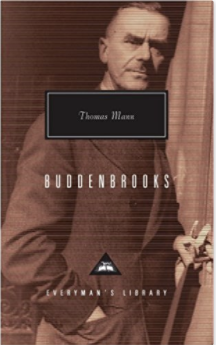
This dense and wonderful novel by the great German author traces the generational saga of a mercantile family and its eventual degeneration into dysfunction by greed and the unwillingness of its members to transfer the ambition of its founders to future generations. It has the feel of a traditional story of rags to riches which turns to eventual disintegration when values cannot be sustained as they come up against cultural crosscurrents and clashing motives.
7. The Wapshot Chronicle by John Cheever
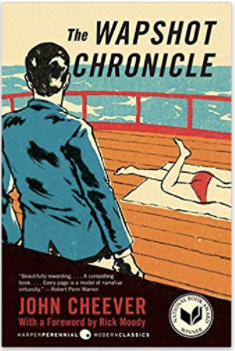
This novel’s family dysfunction is caused by the clash between pious and bourgeois respectability and the mores of a new and vigorously changing America and the inner drives of small-town New England stock. This once hearty strain of people in Cheever’s world have a tough time coping as their predictable behavior is upended by new hazards, conflicts and attitudes and results in inevitable problems of family dysfunction.
6. East of Eden by John Steinbeck
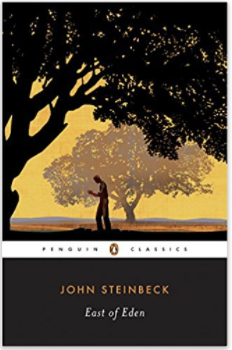
A broken home in one generation powerfully impacts the next one in this novel of ambition and abandonment in California around the turn of the century. Steinbeck captures how the dysfunction grows and matures when parents turn on each other and leave the rearing of children to a single parent who has little understanding of the needs of his offspring. Adapted into an award-winning movie, the novel brings to life the heartbreak and confusion that germinates when separation and jealousy changes a once hopeful relationship and destroys the very meaning of family life.
5. Anna Karenina by Leo Tolstoy
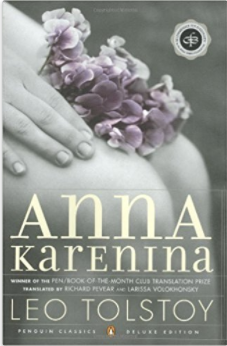
“Happy families are all alike; every unhappy family is unhappy in its own way” are the opening lines of this tour de force novel by Tolstoy. Anna, a woman in desperate need of attention and love and deprived of it in her marriage to an indifferent husband, seeks to find it elsewhere. Seeking refuge in an adulterous relation, she loses everything and in despair commits suicide.
4. Madame Bovary by Gustav Flaubert

The classic story of a woman who, to escape a humdrum life, marries a doctor only to discover that the doctor bores her and cannot give her the love she craves. She enters into an adulterous liaison with a faithless lover who leads her down a path of marital dysfunction and eventual despair.
3. American Pastoral by Philip Roth

The dysfunction in this American Jewish family from New Jersey is framed by the Vietnam War when a once happy family who literally has everything discover that their daughter, a war protester, has participated in a fatal bombing as part of a protest against the war. The daughter disappears to evade the authorities, leaving the family in a state of perpetual unhappiness and dysfunction.
2. The Girl With the Dragon Tattoo by Stieg Larsson

This powerful suspenseful trilogy deals with three dysfunctional families. A prominent and wealthy Swedish family with destructive secrets and perversions, an equally perverse and horrible father-daughter relationship and a somewhat more benign but equally dysfunctional family of the hero-journalist of these stories. When it comes to dysfunctional families, this series is an embarrassment of riches in terms of revealing the causes and variety of dysfunction in families.
1. The Fifth Child by Doris Lessing
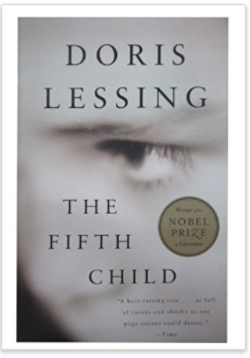
A happy and contented family, a nourishing mother, a devoted father and four happy children full of love and happiness look forward to the same expectations when they have their fifth child. This is not to be. The fifth child is a monster. Ugly, unforgiving, hateful and mean-minded, he brings this once protected family into a state of dysfunction and despair.

The post My Top 8 Picks to Read For a Different Take On Dysfunctional Family Life appeared first on Warren Adler.
January 26, 2018
The Greatest Gift We Can Give to Our Youth is a Passion For Literacy
It is my belief that literacy provides our youth with the soul of education and allows them to attain a deeper understanding of what makes us human; the joys, perils, and insights of our experience. I applaud and celebrate those who understand the importance of instilling a passion for literacy in our young people and I am a firm believer that it can start with just a single spark.
Looking back to my childhood, which took place in Brooklyn in the 1920s, the memory of my mother’s reading habits takes root. When she finished her chores for the day and I returned home from school she would be sitting and reading, waiting to serve the evening meal. She was a prodigious novel reader and I watched her read day after day, getting her books out of storefront lending libraries for what I think was ten cents a day.
It has taken many years to discover this as the seed that grew my own obsession to read and write, but that image of my mother living in a parallel world of fictional characters has stuck with me throughout my entire life. It is almost as if I am writing my stories and novels for her, and I think that is my biggest tribute to her.
As a very young child, before I was able to read on my own, my parents read to me from storybooks. My parents’ gift to me one holiday when I was six years old meant more to me than they could know and it was absolutely essential to my grounding in literature. They bought me a set of MY BOOKHOUSE by Olive Beaupré Miller, which was six volumes of stories and rhymes chosen from international literature for children. The offerings in these wonderful books began with nursery rhymes and progressed to material for children as they grew.
I loved those books. I reread them over and over again. They were gorgeously illustrated and I never grew tired of reading them. It was like crossing a moat from the reality of a world of struggle and strife, to a paradise of storytelling, which opened infinite possibilities and aspirations in a young boy confronting a strange and scary future.
When I had my own children, the set had been moved so many times that I had unfortunately lost track of it. But one day when my oldest child was about five, I found them in the book section of Marshall Field’s in Chicago during a business trip. Honestly, I had the feeling that I had struck gold and the discovery brought a rush of memory and stirred deep emotion and heartfelt tears. Of course, I immediately had a set shipped home for my children.
Literacy is a prize to be savored and a path to insight and wisdom. Lack of literacy is a creeping danger and neglecting the teaching of literacy to children through indifference, impoverishment and neglect is a travesty that can condemn them to a life of ignorance and enslavement. To truly appreciate the power of literacy is to understand its ability to empower, to get to the heart and soul of human intercourse.
My own love affair with reading inspired my dream to become a novelist by the time I was 15. After high school, I went to New York University and pursued a degree in English Literature, where I was introduced to the roster of great American novelists, becoming bewitched by the works of Hemingway, Faulkner, and Fitzgerald. My freshman English professor, Dr. Don Wolfe, inspired me, and I later went on to study creative writing with him at the New School, along with Mario Puzo and William Styron.
As a writer of the imagination and a reader of works of the imagination, I believe reading and writing have given me the necessary insight, understanding, and greater comprehension of the human condition on all levels. It has taken me out of the living moment into the mind and motivation of others, both past and present, and showed me a path to empathy and potential wisdom.
No matter who it is that first sparks that flame, dedication to instilling the values and wisdom that come to us through literacy is sublime, offering a lifetime treasure trove for the soul, the most valuable gift that someone can provide a young person as he/she navigates life.

The post The Greatest Gift We Can Give to Our Youth is a Passion For Literacy appeared first on Warren Adler.
January 24, 2018
Carolyn Miller
I’ve always been an avid reader, and for years enjoyed dreaming up scenarios for the people I’d read about in the news, wondering about their ‘why’ – the reasons that motivate them to action. After my husband’s conclusion of church leadership, I began writing as a form of catharsis, a way of dealing with the emotional turmoil I was experiencing. As characters sprang to life, and I was struggling to write down the immensely witty things they were saying at 2 a.m., I began to weave more stories, incorporating some of the issues and challenges I (and other people I knew) had been facing. How do you forgive? Is falling in love different from choosing to love? How do you trust God when things go wrong? How can personal prejudice be overcome – truly? How do you hope when all seems lost?
Through my characters’ wrestling with these questions I’ve learned more about God, people and myself, and found a safe (though extremely revealing!) place to engage with some of life’s deeper issues. As each book in my Inspirational Regency series has been released I’ve received messages from readers thanking me for the honesty and emotional authenticity depicted. It’s extremely encouraging and rewarding for this small-town Aussie author to know my stories of heart, hope and humor resonate with so many others around the world.
The post Carolyn Miller appeared first on Warren Adler.
January 17, 2018
Katelin Maloney
I didn’t choose to write my first novel. The story chose me. I was teaching Economics at a local university and one night I dreamed a vivid and powerful dream. The story haunted me, and I couldn’t get it out of my head. After weeks of thinking about this story, details and characters grew in my mind, and I knew I had to write it down. The story needed to be told. I learned the craft of writing and after several years and many edits, I published my novel. I’d become an author.
I’ve spent my time speaking to organizations and colleges about domestic violence using my novel as a platform. As a domestic violence survivor, it has been a very emotional journey.
Writing was not something I’d dreamed of doing, it was what I had to do. It was my calling. I can’t imagine doing anything else. My passion for helping people has been fulfilled through storytelling.
Writing can be used as a medium to change lives, make a difference, and to entertain. I am pushing forward using my writing to raise awareness to domestic violence and to make a positive difference in the world. I continue to focus on my passion for helping end domestic violence by writing additional novels.
http://www.katelinmaloney.com/
The post Katelin Maloney appeared first on Warren Adler.
January 10, 2018
Sabrina Flynn
I would not wish my childhood on anyone. Shocked into a dissociative fog at fourteen, I retreated deep inside myself. Quiet, withdrawn, drifting, I was numb to the world—to the sting of a match and the rake of nails. I lived in my imagination for years. The people in my mind were more real to me than reality—they were my friends, my protectors, my heroes. And somewhere in that fog, I began writing their stories down. Writing allowed me to unconsciously explore my trauma from a distance. It gave me a semblance of control, even if that control only extended to a fictitious world. Through writing, I clawed my way from a well of despair and abuse. Writing gave me a voice. It gave me back my life.
The post Sabrina Flynn appeared first on Warren Adler.
Warren Adler's Blog
- Warren Adler's profile
- 111 followers



